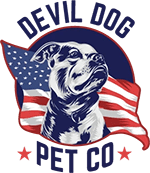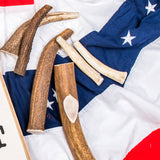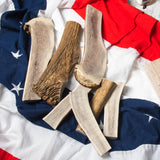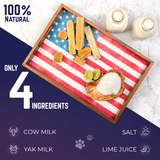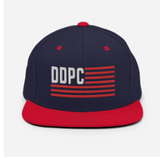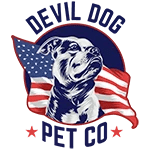Key Takeaways
- Choosing the right dog chew is crucial to prevent costly veterinary emergencies.
- Safe dog chews should align with your dog's jaw strength and chewing habits.
- Effective chews provide mental and dental enrichment without posing health risks.
- Understanding your dog's biology helps in selecting risk-free chew options.
Table of Contents
- What "Safest Dog Chews" Really Means for Responsible Owners
- The Owner's Checklist: Assessing Your Dog Before Choosing a Chew
- The Anatomy of Safe Dog Chews: Types, Ingredients, and How Each Stacks Up
- Risks of Unsafe Dog Chews and How to Dodge Disaster: What Vets Wish Every Owner Knew
- Battle-Tested Comparison: Devil Dog Chews vs. Common Competitors
- Real-World Handling: Safe Chew Sessions, Disposal, and Storage
- Advanced Tactical Choices: Matching the Right Chew to Special Needs
- Conclusion, Lead from the Front: Earning Safe, Satisfying Chew Sessions for Life
The Safest Dog Chews: Unfiltered Guidance for Extreme Dog Leaders
When your dog's jaw strength can destroy furniture but you need them occupied safely, choosing the wrong chew becomes a $3,000 vet bill waiting to happen. The safest dog chews aren't just about avoiding immediate danger, they're about matching your dog's biology, chewing style, and dental health to products that deliver enrichment without emergency room visits. Extra large whole elk antler dog chews are a prime example, offering long-lasting durability for power chewers while minimizing fracture risk.
As Marine Corps veterans who've seen too many dogs surrendered for "behavioral issues" that proper chews could have prevented, we cut through marketing fluff to deliver the tactical guidance responsible owners need. Safety isn't universal, what works for a 10-pound senior isn't safe for a 90-pound power chewer. For gentle chewers or those with allergies, Himalayan yak chews provide a fully digestible, protein-rich option that dissolves safely in the stomach.
For more guidance on selecting the right size and type, see our article on how to choose safe dog chews that are the right size for your dog.
Download the FREE 10-Step Dog Prep Guide
What "Safest Dog Chews" Really Means for Responsible Owners
Safe dog chews meet five non-negotiable criteria: appropriate hardness for your dog's dental health, full digestibility to prevent blockages, proper sizing to eliminate choking risk, transparent ingredient sourcing, and calorie content that won't derail nutrition. A chew that's safe for one dog can be lethal for another.
The hardness spectrum runs from soft bully sticks (easily compressed by human fingernail) to ultra-hard antlers (requiring significant jaw pressure). Digestibility separates life-saving options like single-ingredient beef from dangerous alternatives like rawhide, which can swell and cause intestinal obstructions. Ultra thick bully sticks are a safer, fully digestible alternative for dogs that need a gentler chew than antlers but more durability than standard treats.
Compare this transparency to rawhide's chemical processing (bleach, formaldehyde), synthetic nylon's indigestible plastic, or pig ears' bacterial contamination risk. We source from traceable suppliers, inspect every piece by hand, and never use artificial preservatives or dyes.
The Owner's Checklist: Assessing Your Dog Before Choosing a Chew

Your dog's chewing profile determines safety more than any product feature. Aggressive chewers attack straight down with back molars, generating 300+ pounds of pressure per square inch. Moderate chewers gnaw side-to-side with front teeth. Gentle chewers lick and scrape rather than crunch.
Age dictates jaw development and dental vulnerability. Puppies under 5 months have soft baby teeth unsuitable for hard chews. Adults (5 months to 7 years) handle full-strength options when properly sized. Seniors may have worn enamel or missing teeth requiring softer alternatives.
The muzzle-sizing rule prevents choking: choose chews longer than your dog's lower jaw and thick enough they can't fit between back molars. Our dog Dexter taught us this lesson early, a too-small antler became a midnight emergency when he tried swallowing it whole.
2-Minute Home Assessment
Give your dog a carrot stick while you watch. Aggressive chewers demolish it in under 30 seconds using back teeth, an action that can even challenge dog memory as they anticipate the crunch. Moderate chewers take 2-3 minutes with varied techniques. Gentle chewers lick and nibble for 5+ minutes. This simple test reveals your sizing and hardness requirements.
The Anatomy of Safe Dog Chews: Types, Ingredients, and How Each Stacks Up
Devil Dog Pet Co.'s product line represents three distinct safety profiles engineered for different chewing needs. Himalayan yak chews offer 100% digestibility with natural softening, curds pressed from yak and cow milk create a protein-rich option that dissolves safely in stomach acid. For a variety of options tailored to your dog's needs, explore our full selection of Himalayan Dog Yak Chews.
Naturally shed elk antlers provide the longest-lasting option for power chewers, with dense bone matrix that rarely splinters. Split versions expose nutrient-rich marrow for flavor motivation while maintaining structural integrity. Whole antlers deliver maximum durability for dogs who destroy everything else.
Grass-fed bully sticks occupy the gentlest end of the spectrum, single-ingredient beef pizzle that's fully digestible and softer than bone alternatives. Our triple-washing process eliminates the barnyard odor that makes other brands unbearable indoors.
Compare this transparency to rawhide's chemical processing (bleach, formaldehyde), synthetic nylon's indigestible plastic, or pig ears' bacterial contamination risk. Our Dog Birthday Box treats are sourced from traceable suppliers, inspected by hand, and never use artificial preservatives or dyes.
Risks of Unsafe Chews: Ingredient and Processing Comparison
| Chew Type | Processing Method | Expected Duration | Ingredient Source |
|---|---|---|---|
| Yak Chews | Traditional smoke-drying | 1-2 weeks | Himalayan yak cooperatives |
| Elk Antlers | Natural shedding, hand-cut | 3-5 weeks | Rocky Mountain wild elk |
| Bully Sticks | Triple-washed, slow-baked | 20-60 minutes | Grass-fed USA cattle |
| Rawhide | Chemical bleaching | Variable | Unknown origin |
Red Flag Ingredients to Avoid
Bleach, formaldehyde, artificial colors, BHA/BHT preservatives, propylene glycol, and any "meat by-products" without species identification. These chemicals increase toxicity risk while masking poor-quality source materials.
Risks of Unsafe Dog Chews and How to Dodge Disaster: What Vets Wish Every Owner Knew
Choking occurs when chew pieces lodge in the throat or esophagus, usually from undersized chews or aggressive gulping. Gastrointestinal blockage develops when indigestible materials accumulate in the stomach or intestines, requiring emergency surgery. Tooth fractures happen when dogs bite down on chews harder than their enamel can handle.
Warning signs demand immediate action: sudden yelping during chewing, excessive drooling, pawing at the mouth, loss of appetite, vomiting, or inability to defecate. These symptoms can escalate from discomfort to life-threatening within hours. For more on dental health and prevention, read our guide to dog dental chews.
The 30-second safety inspection prevents most emergencies. Check for surface cracks that could create sharp edges, measure remaining length against your dog's muzzle, and feel for soft spots that indicate structural weakness. When a chew becomes small enough to fit entirely in your dog's mouth, it's time for disposal.
Emergency Protocol: If Your Dog Swallows a Large Chew Piece
Step 1: Stay calm and check breathing, if airways are clear, don't induce vomiting. Step 2: Contact your vet immediately with chew type and estimated size. Step 3: Monitor for lethargy, vomiting, or straining to defecate over the next 24-48 hours. Step 4: Keep your dog calm and limit activity until cleared by a veterinarian.
Battle-Tested Comparison: Devil Dog Chews vs. Common Competitors

Our Marine Corps inspection standards separate Devil Dog products from mass-market alternatives that prioritize cost over canine safety. Every antler, yak chew, and bully stick undergoes hand inspection for structural integrity, proper sizing, and contamination before packaging, a level of quality control impossible with overseas mass production. If you're considering antler options, our antler dog chews collection offers a variety of sizes and types for every chewer.
Digestibility testing reveals the critical difference. Our yak chews dissolve completely in simulated stomach acid within 4 hours. Competitor rawhide products showed 60% remaining material after 12 hours, creating blockage risk. Bully sticks from discount suppliers contained artificial preservatives that can trigger allergic reactions in sensitive dogs.
Cost-per-hour analysis favors premium options. A $12 Devil Dog antler entertaining a power chewer for 30 hours costs $0.40 per hour. Cheap rawhide bones at $3 each, lasting 45 minutes, cost $4.00 per hour while delivering inferior safety and nutrition.
| Criteria | Devil Dog Antlers | Devil Dog Yak Chews | Discount Rawhide | Nylon Bones |
|---|---|---|---|---|
| Digestibility | Mineral dust only | 100% digestible | Poor (swelling risk) | Zero (plastic) |
| Fracture Risk | Low (proper sizing) | Very Low | High (unpredictable) | Medium |
| Source Transparency | Rocky Mountain elk | Himalayan cooperatives | Unknown | Synthetic |
| Cost Per Hour | $0.40 | $0.80 | $4.00 | $0.60 |
"I inspect every batch like I'm preparing gear for deployment, because your dog's safety depends on it. No shortcuts, no compromises, no exceptions." - John Balcazar, Marine Corps Veteran & Co-Founder
Real-World Handling: Safe Chew Sessions, Disposal, and Storage
Never leave your dog unsupervised with a new chew during the first three sessions. Start with 10-15 minute supervised trials to gauge chewing style and tolerance. Power chewers need constant monitoring with antlers; moderate chewers can handle extended yak chew sessions once you've confirmed proper technique. For a long-lasting, supervised treat, try our Monster Himalayan Dog Chew for aggressive chewers.
Retirement rules prevent emergencies. Antlers get pulled when they shrink to fit between back molars or develop surface cracks. Bully sticks reach end-of-life when the remaining piece can fit entirely in your dog's mouth. Yak chews get the microwave treatment, soak the final nub for 5 minutes, microwave 45-90 seconds until it puffs, cool completely, then serve as a crunchy cheese cloud.
Between sessions, air-dry chews completely before storage in breathable containers. Moisture breeds bacteria and softens structural integrity. Our warehouse uses mesh bags in climate-controlled conditions, home storage in a ventilated basket works perfectly.
Devil Dog's Top 5 Safety Habits
1. Size up one level for aggressive chewers 2. Inspect for cracks before every session 3. Remove when chew fits in dog's mouth 4. Air-dry between uses 5. Rotate chew types weekly for balanced enrichment
Advanced Tactical Choices: Matching the Right Chew to Special Needs
Sensitive stomachs require single-ingredient options with minimal processing. Our antlers contain zero additives, pure elk bone matrix with natural minerals. Dogs with beef allergies thrive on yak chews or antlers; dairy-sensitive pups stick with antlers or bully sticks made from grass-fed cattle.
Aggressive chewers demand Monster or Beast-sized options that force proper gnawing technique. Undersized chews encourage dangerous straight-down biting that fractures teeth. Senior dogs benefit from split antlers or yak chews, the exposed marrow provides immediate flavor reward without excessive jaw strain. For seniors or dogs needing a softer option, our jumbo split elk antler dog chew is an excellent choice.
Post-dental surgery dogs need temporary chew restrictions. Standard bully sticks offer protein satisfaction with minimal hardness during healing. Resume harder chews only after veterinary clearance, typically 2-4 weeks depending on procedure complexity.
| Dog Condition | Best Choice | Avoid |
|---|---|---|
| Aggressive Chewer | Monster/Beast Antler | Standard sizes, rawhide |
| Senior (10+ years) | Split Antler, Yak Chew | Whole antlers, hard bones |
| Beef Allergy | Antlers, Yak Chews | Bully sticks, beef treats |
| Dairy Sensitivity | Antlers, Bully Sticks | Yak chews, cheese treats |
Conclusion, Lead from the Front: Earning Safe, Satisfying Chew Sessions for Life

Your dog's safety begins with your leadership choices and unwavering supervision. The safest dog chews deliver dental benefits, mental stimulation, and behavioral satisfaction without compromising structural integrity or digestive health. Quality sourcing, proper sizing, and consistent monitoring separate responsible ownership from reactive crisis management.
Safe chews create compound benefits, cleaner teeth reduce veterinary costs, satisfied chewing instincts prevent destructive behaviors, and confident handling builds trust between dog and handler. This investment in premium, ethically-sourced options pays dividends in veterinary savings and household harmony. For more information on potential risks, see the FDA's advisory on why bones may not be safe for your dog.
Rotate chew types quarterly, reassess your dog's needs as they age, and never hesitate to contact experts for guidance. Devil Dog Pet Co. stands ready to support your mission with Marine Corps-grade products and veteran-rooted service. For additional reading, check out our overview of long lasting dog chews or consult the AVMA's resource on your pet's dental care.
Lead like a Marine, serve like a Devil Dog, your pack depends on it.
Download the FREE 10-Step Dog Prep Guide
Frequently Asked Questions
What factors should I consider about my dog's chewing habits and jaw strength when selecting a safe dog chew?
Assess your dog's chewing intensity, jaw strength, and dental health before choosing a chew. Power chewers need durable, hard chews like large whole elk antlers, while gentle chewers or seniors benefit from softer options. Always match chew hardness and size to prevent tooth damage and choking risks.
How do different types of dog chews like elk antlers, bully sticks, and Himalayan yak chews compare in terms of safety and digestibility?
Elk antlers offer extreme durability but are very hard, so they suit strong chewers and require supervision to avoid tooth fractures. Bully sticks are softer, fully digestible, and great for moderate chewers but can be high in calories. Himalayan yak chews are firm yet edible, lactose-free, and digest safely, making them a good middle ground for many dogs.
Why are some common dog chews like rawhide and pig ears considered risky, and how can I avoid potential health hazards?
Rawhide and pig ears often pose choking hazards, poor digestibility, and chemical contamination risks. They can cause blockages or digestive upset. Avoid these by choosing single-ingredient, fully digestible chews with transparent sourcing and by supervising all chew sessions closely.
What criteria define the safest dog chews, and how can I ensure the chew I choose meets these standards for my dog's specific needs?
Safest chews are appropriately sized, matched to your dog's chewing style and dental health, fully digestible, and made from transparent, natural ingredients. To ensure safety, pick chews that minimize splintering, avoid artificial additives, and always supervise your dog during chew time.
